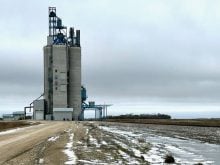Canadian Cattlemen’s Association president Hugh Lynch-Staunton was in Ottawa in mid-November asking for federal help to get his sector through a severe downturn caused by a high dollar, low prices and high feed costs.
But in many offices, he received a response that angered him. He heard that cattle producers are business operators who should live or die in the market in which they exist without looking for government help.
“We were knocking on doors and I was surprised and in disagreement with the sentiment expressed that this is just part of life, that our industry is too big and that this is just the way things are,” he told the Senate agriculture committee Nov. 22. “We heard that comment too many times but we do not believe it for a moment.”
Read Also

Internet of Things tapped for better emissions insights
Interconnected field sensor fleet allows better soil monitoring coverage and, hopefully, live insights on farm greenhouse gas emissions and nitrogen fertilizer application for farms.
Lynch-Staunton said the industry has potential for growth in a world of shrinking red meat supplies and increasing consumer prosperity.
“Certainly it can maintain the present level if we can get over this major speed bump, as I like to call it.”
One of the association’s major recommendations to Ottawa is that a program of cash advances against future cattle sales be set up that is divorced from the Canadian Agricultural Income Stabilization program.
There is a cash advance system that federal and provincial agriculture ministers have said will be used to get dollars into producers’ hands by early next year.
However, the CCA’s director of government and international relations, John Masswohl, told senators its effectiveness is diminished because it is tied to CAIS eligibility. After a long string of low profit years, most producers do not have much of a margin against which to borrow.
“The way the system works is you can get an advance up to 50 percent of the value of animals up to the maximum of your CAIS level,” said Masswohl. “We are finding everyone’s CAIS level is the binding constraint right now.”
He said the cattlemen’s group would like the rules changed to separate the cash advance from CAIS.
“The reason that connection is there is so CAIS is the security for the advance,” Masswohl said. “We would like the livestock itself to be the security.”
However, industry representatives said they were not yet prepared to state publicly the level of advance producers needed to get them through the crisis.
Lynch-Staunton said industry margins are being killed by the above-par Canadian dollar and he suggested a reduction in interest rates by the Bank of Canada could lower the dollar.
He also complained about the impact on feed prices of government support for the biofuel industry and the cost of government regulations.
The southern Alberta rancher said another factor hurting the industry is the exodus of many older producers who wanted to leave earlier but could not afford to during the BSE crisis. In addition, many producers are trying to cash in on high grain prices by converting forage land to grain.
Quebec cattle industry leader Michel Dessureault told senators there is one additional factor affecting his province’s 20,000 producers.
Several years ago, producers bought Quebec’s two packing plants but now they are losing money.
One has gone out of business and the largest one, Levinoff-Colbex, needs a cash infusion in part because it faces up to $5 million in annual costs that its American competitors do not.
He said Ottawa should put some money into the plant to give Canadian producers an alternative to shipping to American plants.














